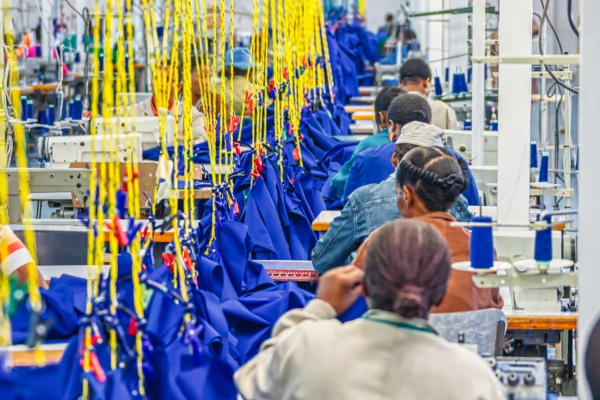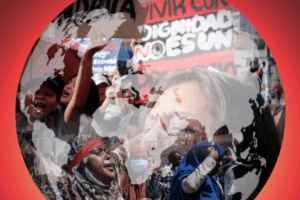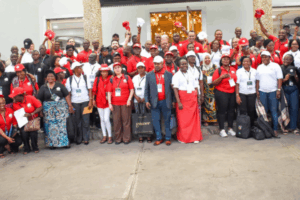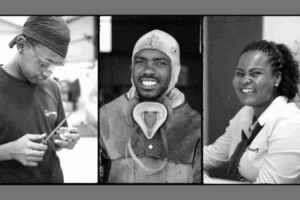In Their Own Words: Workers address gender-based violence and harassment in South Africa’s garment factories and clothing retail stores report draws on testimonies from 117 workers in companies in three provinces. In these companies, bullying, verbal abuse, and physical forms of sexual harassment are common. 98% of women workers surveyed in 2022 say they have experienced one or more incidents of gender-based violence or harassment.
Gender-based violence and harassment (GBVH) is widespread in the world of work and affects millions of workers globally, with women being the most affected. GBVH affects various professions but is especially rampant in the garment industry. South Africa’s garment sector, encompassing clothing, textile, footwear, and leather companies, employs around 212,000 people, with 92,000 in manufacturing and 120,000 in retail. The retail sector faced severe challenges due to the COVID-19 pandemic, including a surge in job insecurity and working hours. For the predominantly female workforce already navigating diminished economic and social standing within their households, abuse and sexual harassment from both customers and managers have become an unwelcome norm.
Participatory Action Research

Participants engaged in the participatory action research process in Cape Town, 2022.
Collaborating with The Solidarity Center, COSATU, SACTWU, SACCAWU, and NALEDI, our research aimed to give voice to women workers and other marginalised workers as experts on their own experiences with GBVH in the workplace and as owners of the decision-making processes for the issue. We wanted to identify effective worker-led solutions to eradicate GBVH in the clothing and retail sectors.
SACTWU and SACCAWU nominated 19 unionists to conduct the research in three provinces. Participatory Action Research (PAR) prioritises collaboration, education, skill development, and preventing re-traumatisation of participants. We created a safe space for researchers to debrief and share experiences, with support from union leadership during challenging moments.
Workers talking with workers about GBVH: Key findings
The participatory action research process began by understanding workers’ perceptions of gender-based violence and sexual harassment. Shockingly, 98% of respondents reported experiencing some form of GBVH, with managers and colleagues identified as the main perpetrators. While physical violence and rape are the extreme forms, bullying and verbal abuse were also found to be prevalent. Normalising recurring incidents has created a climate of fear, discouraging victims from reporting and allowing perpetrators to act with impunity.
Types of gender-based violence and harassment
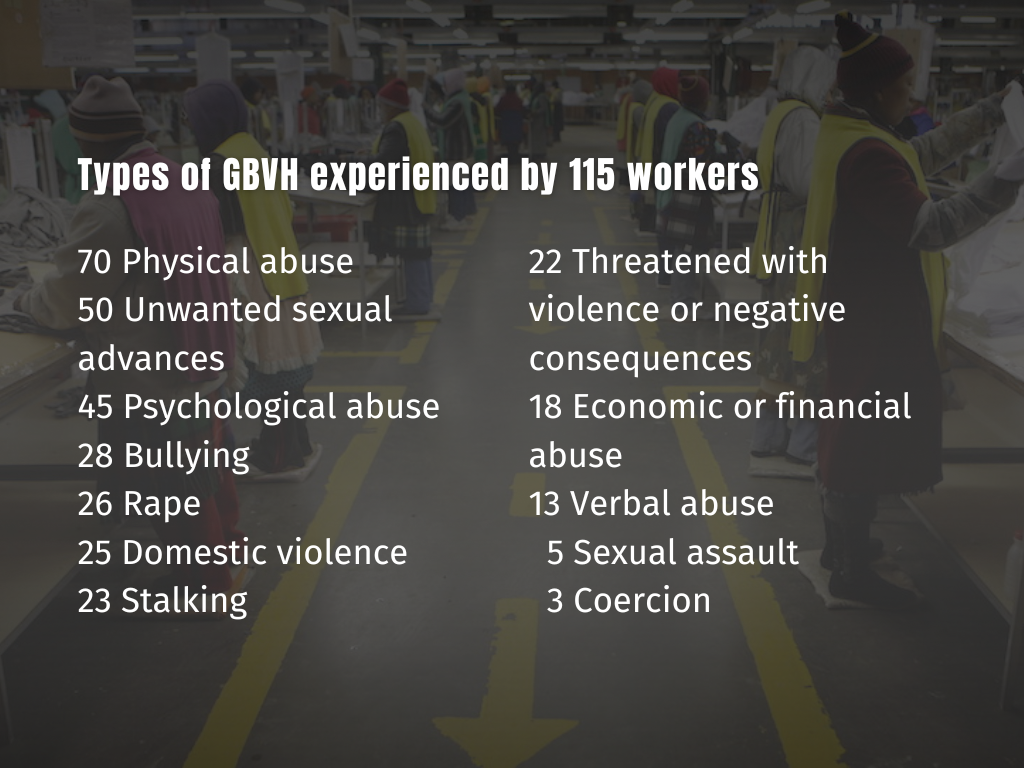
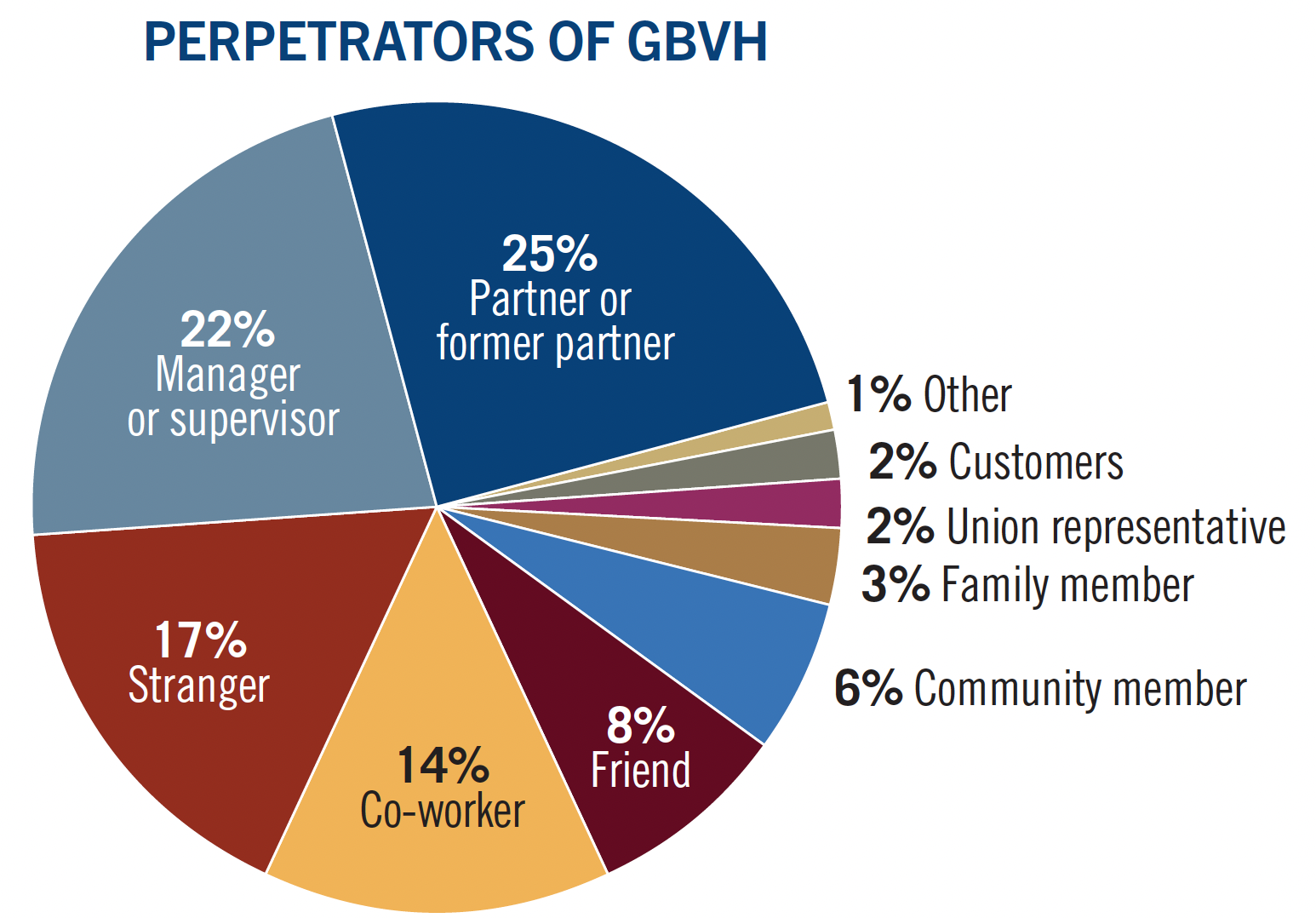
“My co-worker commented on the way I look and said he wonders how I will look without clothes.”
“My manager called me to his office and said that if I want to extend my hours of work, I must go out with him. He kept on asking, even forcefully and aggressively.”
“There must be more campaigns for LGBTQ so that everyone can stop making a joke that is actually name calling and is rude.”
Nearly half of GBVH incidents occurred at the workplace, and 32% of workers faced violations at home from partners or former partners. 65% of interviewees highlighted the recurrence of incidents and GBVH “happening all of the time.”
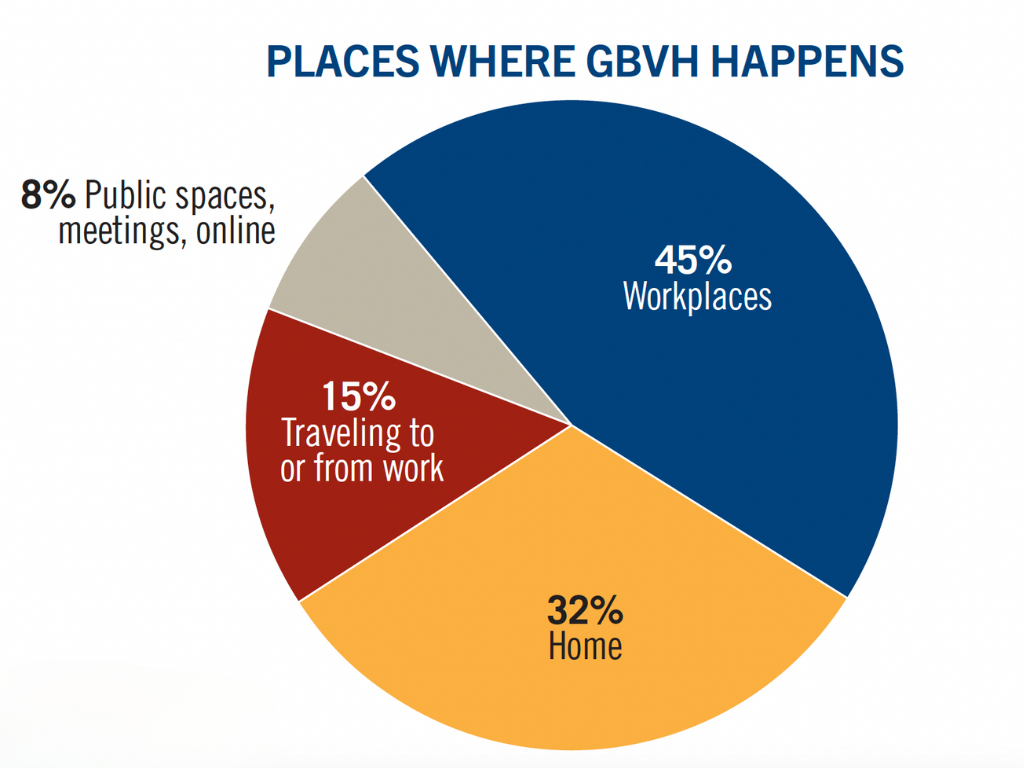
Challenges in confronting GBVH
“There are many cases in the company, but people are reluctant to talk about it. There are also many cases of people who are abused at home and this impacts them when they come to the workplace – and that is why absenteeism is high.”
Lack of reporting emerged as a significant challenge, with only 30% of workers reporting incidents, aligning with global trends in underreporting. Disturbingly, in 40% of cases reported to management, the union was not involved. While half of the victims expressed relief or satisfaction with the outcomes, the other half felt alone, helpless, victimised, unsafe, or scared.
In 40% of reported GBVH cases to management, the union was not involved, attributed to reasons such as lack of union information (30%), the victim not being a union member (5%), or the union’s non-response (5%). Studies show that when shop stewards address GBVH in workplace meetings and handle cases, the workers are more likely to approach them with similar issues. There appears to be a discrepancy between the observed culture of silence and the reported prevalence of incidents, with only 37 out of 86 respondents admitting to witnessing GBVH. The reluctance to acknowledge witnessing GBVH and a pervasive culture of “not wanting to be involved” indicate challenges in addressing and reporting incidents, contributing to an environment where instances of GBVH may be underreported or overlooked.
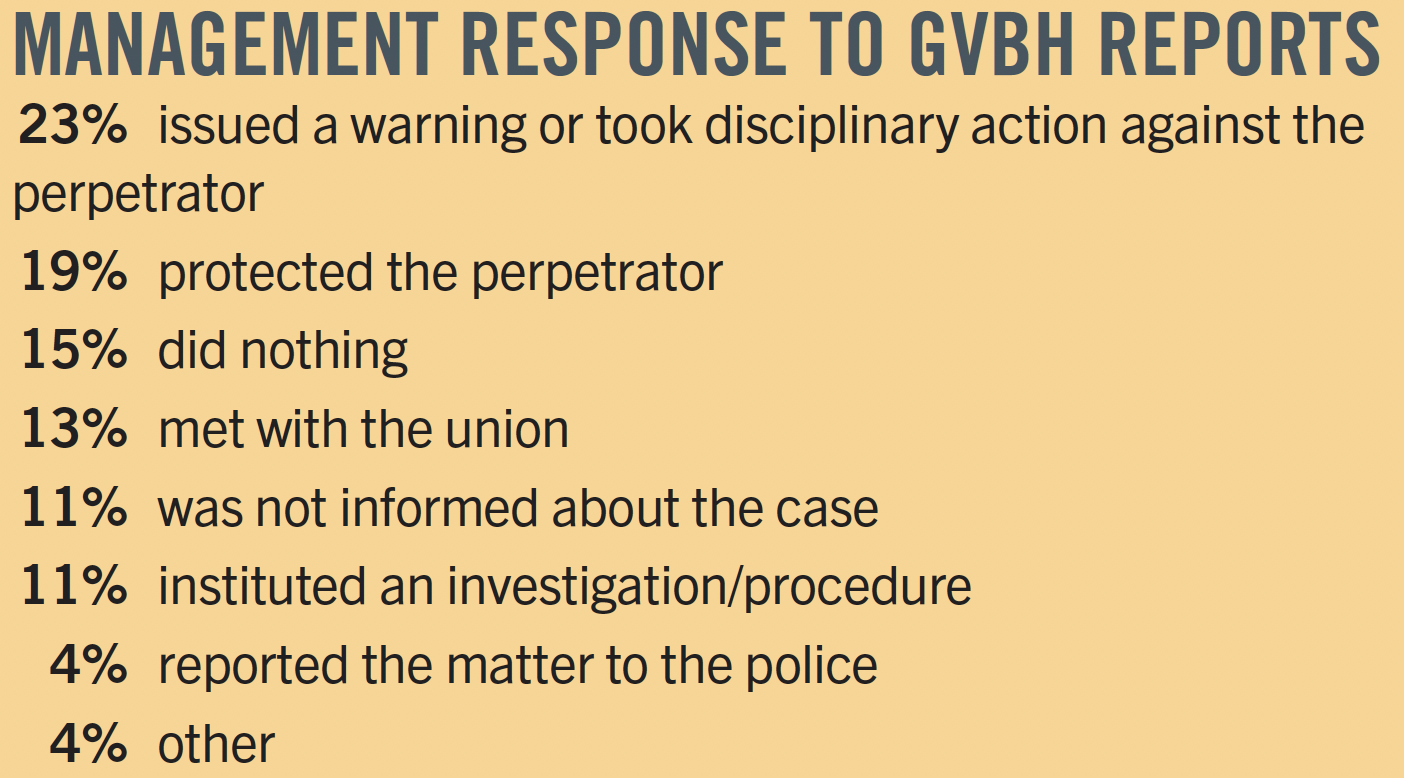
Late trading in the retail sector poses a significant safety concern for employees vulnerable to harassment or assault. Especially women working late at night are at risk of harassment or assault during their commute. The lack of secure transportation puts the safety of workers at risk. Only 10% of respondents confirmed companies have safety policies for employees during their commute to and from work.
Recommendations
The worker researchers have proposed a range of measures to end GBVH in garment factories and retail stores.
Employers
Employers must implement zero-tolerance policies, establish support systems, and train managers in survivor-centred approaches to GBVH. Enforce disciplinary measures, publish anti-harassment policies, provide protection and support for survivors of GBVH, and raise awareness. Workers have the right to organise and bargain collectively for a GBVH-free workplace. Employers should build on the Lesotho Accords to end GBVH in the garment supply chain by negotiating binding agreements with global brands, trade unions, and women’s groups.
Trade unions and federations
Unions should negotiate and advocate strong workplace policies on GBVH. Use collective action to force management to address GBVH seriously and train shop stewards as anti-harassment officers to ensure each factory has a knowledgeable representative. Regularly raise the issue of GBVH in union meetings, educate workers about their rights, and carry out awareness-raising campaigns to address GBVH in unions. Also, participate in joint efforts against GBVH to represent the voice of garment workers.
Government
The government should align labour laws with ILO Convention 190, conduct gender equality education campaigns for boys and young men, improve investigation and prosecution of GBVH and femicide cases, strengthen the capacity of government departments and service providers to provide better support and expand and improve services for GBVH survivors.


